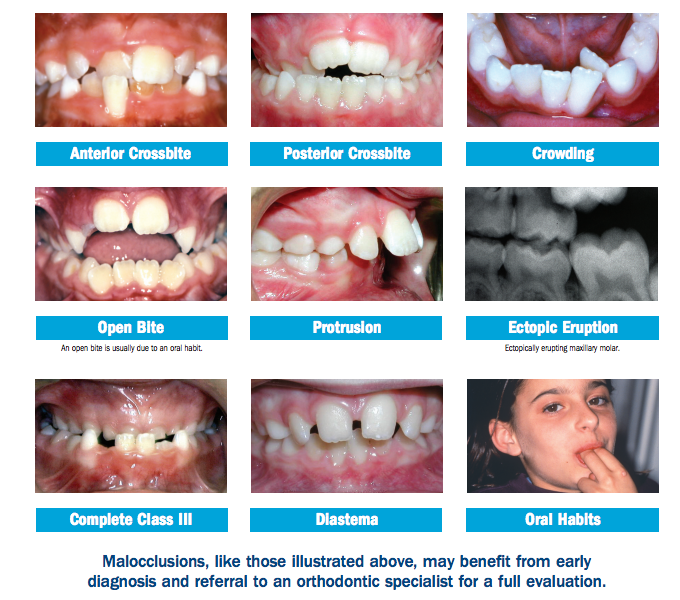The Causey Orthodontics Ideas
Table of ContentsCausey Orthodontics - QuestionsCausey Orthodontics for Beginners5 Easy Facts About Causey Orthodontics ShownWhat Does Causey Orthodontics Do?The Only Guide to Causey OrthodonticsCausey Orthodontics - An OverviewGet This Report on Causey Orthodontics
What is the distinction between a dental practitioner and an orthodontist? All dental professionals, consisting of orthodontists, deal with the teeth, periodontals, jaw and nerves.
You can believe of both physicians that treat gum tissue and teeth problems. The major distinction is that ending up being an orthodontist requires a particular specialized in dealing with the imbalance of the teeth and jaw.
The Definitive Guide to Causey Orthodontics
An orthodontist is a dental practitioner that has actually undergone training to specialize in the medical diagnosis, prevention and therapy of irregularities in the jaw and teeth. They can also identify potential problems in teeth placement that might establish when conditions are left without treatment (Causey Orthodontics).
This includes all the required education and learning to become a basic dental professional. According to the American Pupil Dental Organization (ASDA), it suggests you will certainly require to have either a Physician of Medicine in Dental Care (DMD) or a Physician of Oral Surgical Procedure (DDS). Simply put, orthodontists require to complete oral school and after that get an orthodontics specialized education.
Some orthodontists likewise get their masters in craniofacial biology. best orthodontist (https://www.merchantcircle.com/causey-orthodontics1-gainesville-ga). Lots of dental schools supply restricted orthopedic training and direction, which is why general dental professionals require to go to orthodontic school after graduation. Orthodontic residency programs supply intensive training for this kind of dental expertise. These programs focus on two details locations or self-controls: Dentofacial Orthopedics: This research study concentrates on guiding teeth and jaw development.
Our Causey Orthodontics PDFs

 The general objective of an orthodontist is to boost an individual's bite. Not everybody is birthed with straight teeth, and an orthodontist will guarantee that individuals get uniformly spaced straight teeth.
The general objective of an orthodontist is to boost an individual's bite. Not everybody is birthed with straight teeth, and an orthodontist will guarantee that individuals get uniformly spaced straight teeth.
Our Causey Orthodontics Ideas
The American Organization of Orthodontists recommends your very first check up by age 7. You'll need to see your orthodontist if you have an imbalance in your teeth, additionally referred to as malocclusion. If you discover uneven bite patterns, a slightly askew jaw, or when your teeth are overcrowded, you will likely need orthodontic therapy.
In addition, we use adjustable treatment routines, flexible payment options and a fun, pleasurable experience.
An orthodontist is a dental professional trained to diagnose, avoid, and treat teeth and jaw irregularities. They fix existing conditions and are trained to identify problems that may develop in the future. Orthodontists work with people of all ages, from kids to grownups. Individuals frequently associate a best smile with healthiness.
The smart Trick of Causey Orthodontics That Nobody is Discussing
Malocclusion, or misaligned teeth, can lead to oral problems, consisting of dental cavity, gum disease, and challenging or painful chewing. Yet not every person is born with straight teeth. If you have a bad bite or huge spaces in between your teeth, you may intend to consult a dental practitioner concentrating on orthodontic care.
(Image Credit Report: DigitalVision/Getty Images) Orthodontists utilize dealt with and removable dental tools, like braces, retainers, and bands, to transform the setting of teeth in your mouth. Orthodontic treatment is for oral irregularities, including: Jagged teethBite issues, like an overbite or an underbiteCrowded teeth or teeth that are also much apartJaw misalignmentThe goal of orthodontic therapy is to improve your bite.
How Causey Orthodontics can Save You Time, Stress, and Money.

, yet not all dental professionals are orthodontists. They concentrate on 2 areas: Exactly how to properly and securely relocate teeth Exactly how to properly lead advancement in the teeth, jaw, and faceOnce an orthodontist has completed training, they have the option to come to be board licensed.
Malocclusion leads to tooth congestion, a twisted jaw, or irregular bite patterns. Malocclusion is generally treated with: Your orthodontist connects steel, ceramic, or plastic square bonds to your teeth.
More About Causey Orthodontics
If you have just minor malocclusion, you may have the ability to utilize clear dental braces, called aligners, as opposed to traditional dental braces. Some people need a headwear to assist move teeth into line with stress from outside the mouth. After dental braces or aligners, you'll need to use a retainer. A retainer is a custom-made tool that maintains your teeth in position.